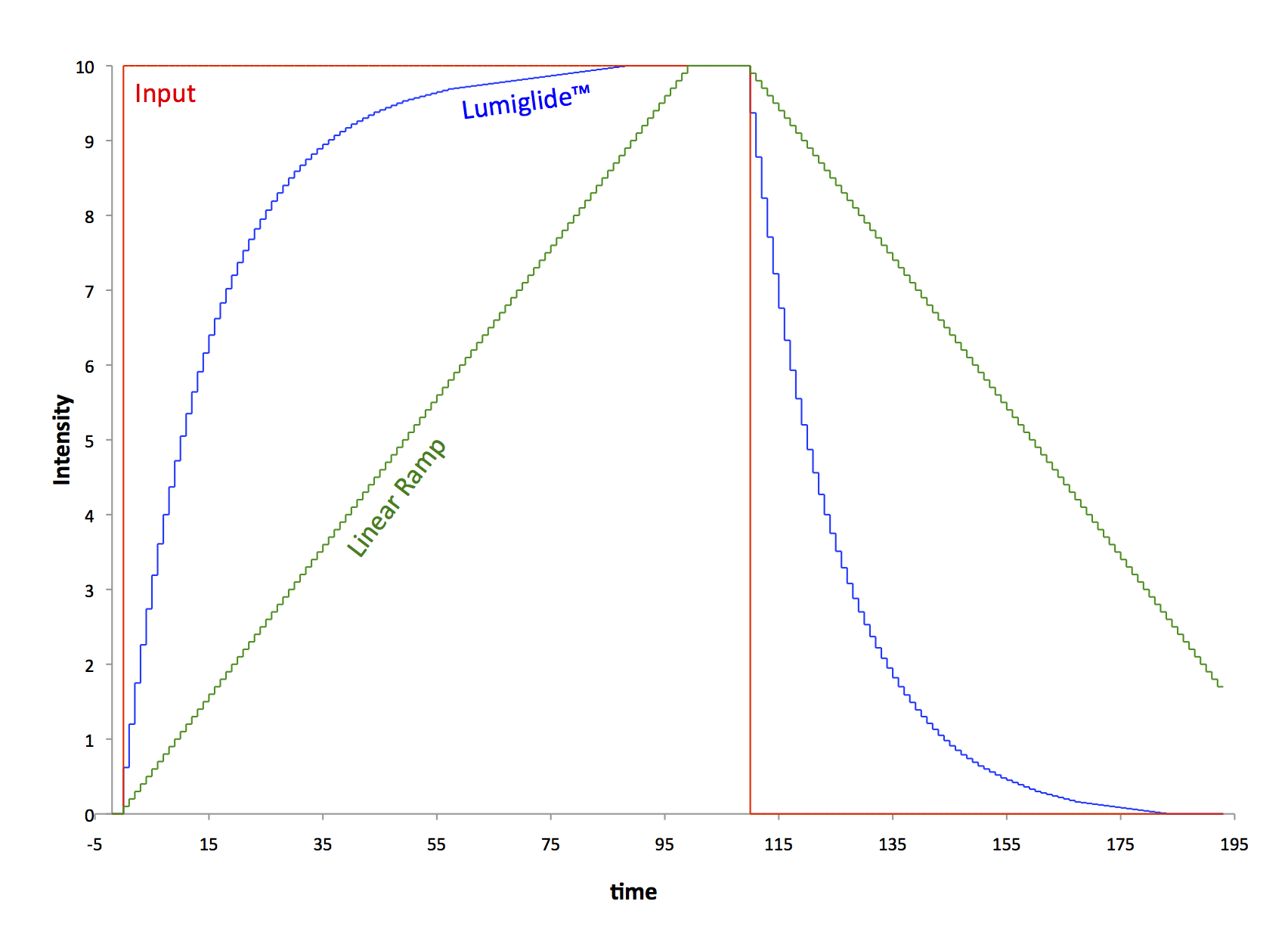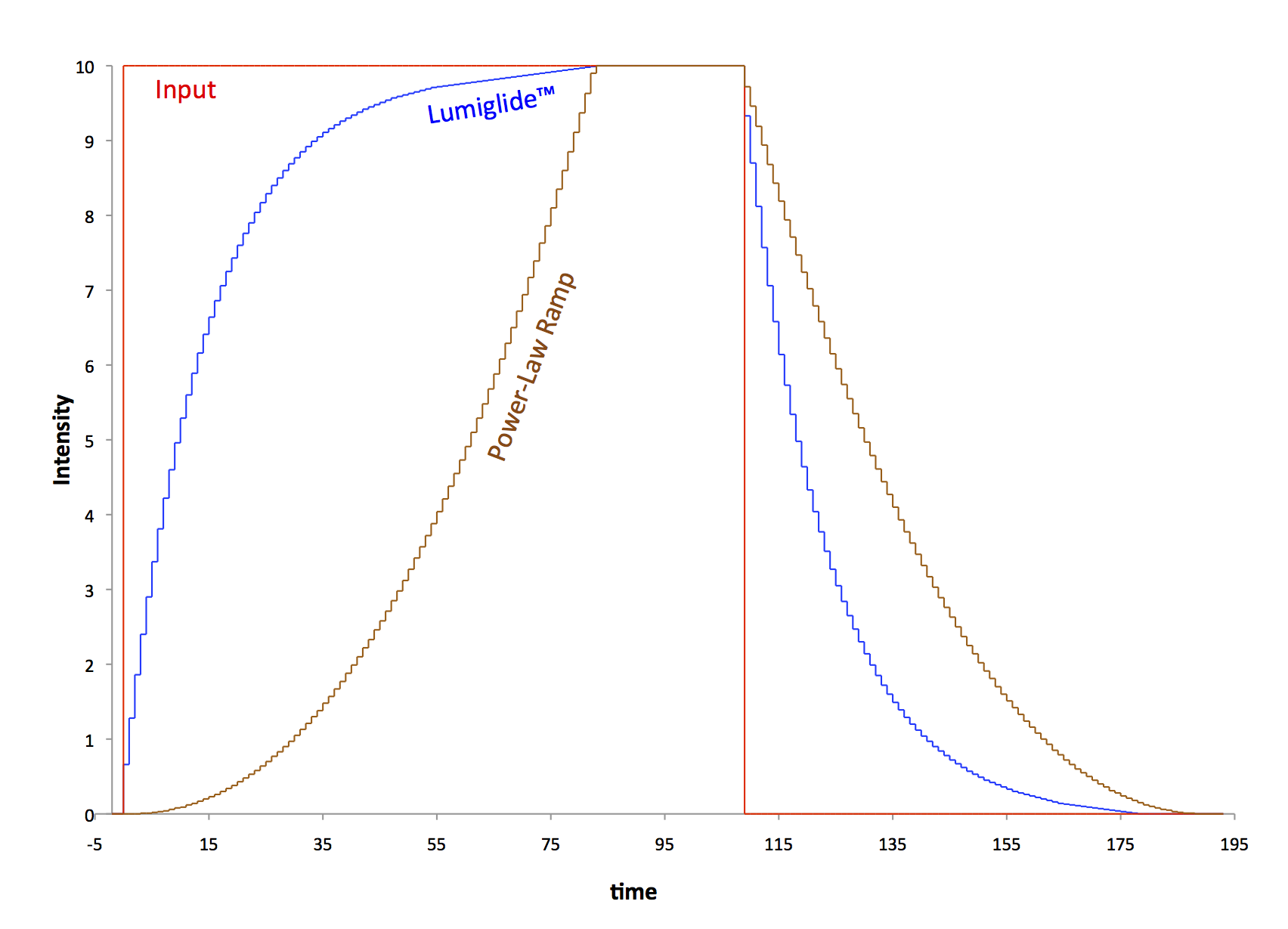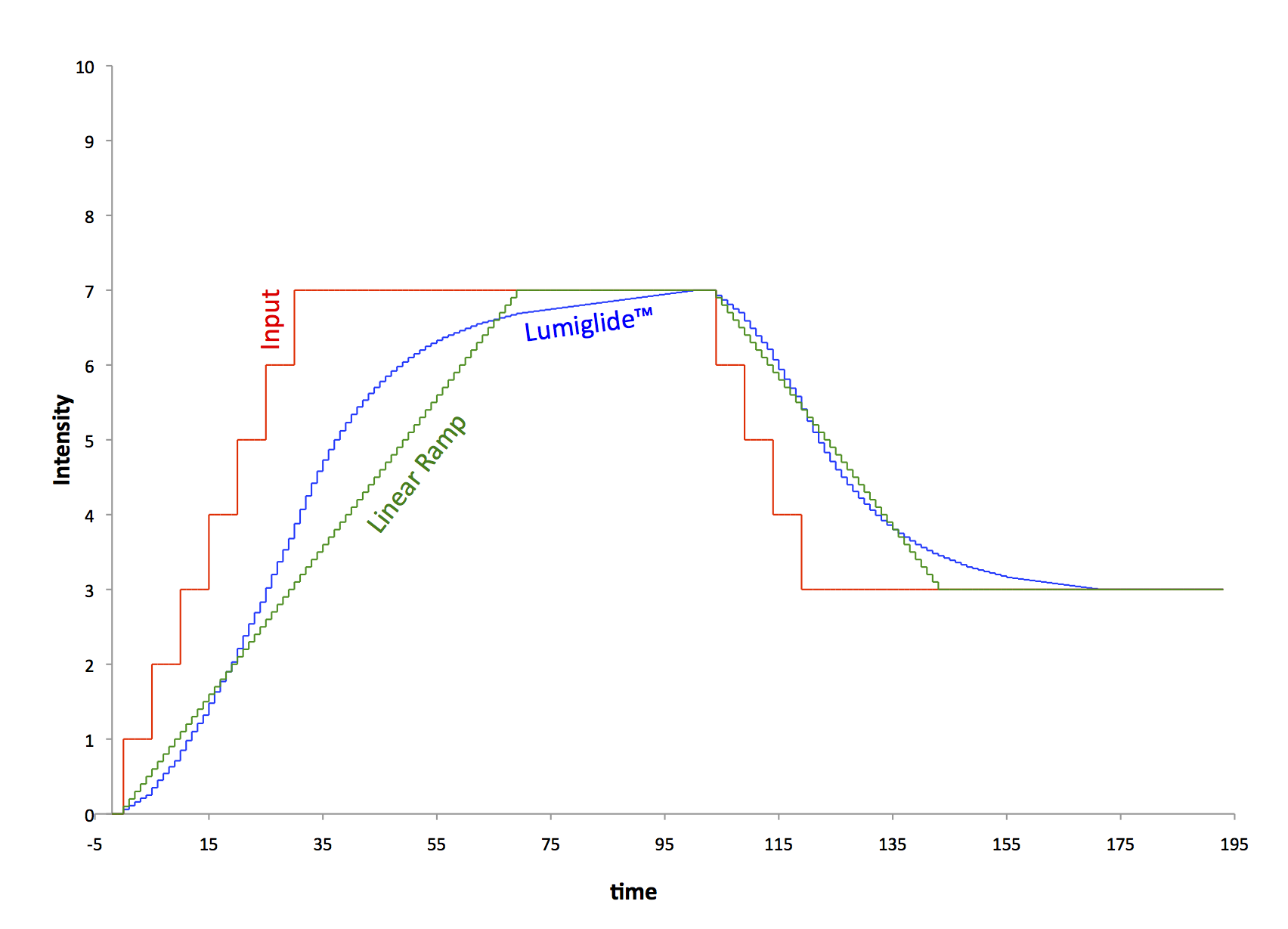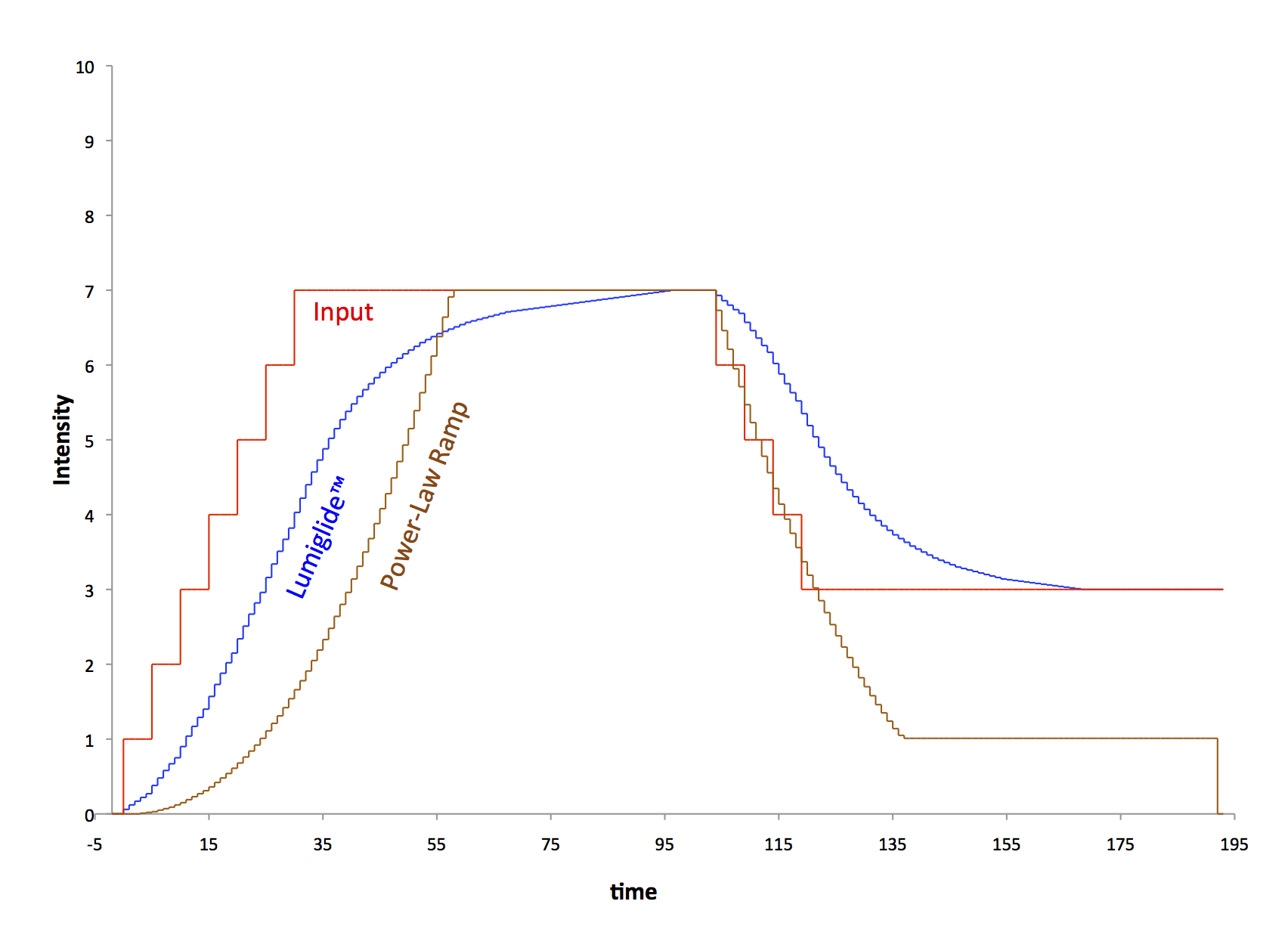Lumiglide is an improved method for LED dimming, utilizing signal processing techniques designed to accommodate the human visual system.1
The eye has an astonishing sensitivity to even miniscule intensity steps, making smooth dimming difficult. Lumiglide takes advantage of a curious and little known characteristic of the eye. ZulchLabs research found that even large intensity steps do not appear as flicker so long as they descend in size at a fast enough rate. As the ramp proceeds the step size becomes small enough to eliminate flicker altogether.
Here is a typical Lumiglide transition in comparison to the benchmark linear ramp. Intuition might suggest that the rapid start would create a visual artifact, but this does not occur. Note that the rising and falling curves are not mirror images.
Comparing Smooth Dimming
(in response to changing Input)
Lumiglide avoids the tradeoff between smoothness and speed inherent to linear ramps and dimming curves. It attains complete smoothness faster than linear and without appearing to take much more time than an immediate transition. A Lumiglide transition interrupted with a new target level smoothly merges into a new trajectory. Lumiglide is capable of emulating various incandescent lamps (e.g. having different filament thickness and drive voltages.) The curves shown here are from of a family of possibilities, so any combination of speed and smoothness can be selected as desired—all the way from dead vertical to a linear ramp.
The following shows Lumiglide compared to a typical static dimming curve.2
Lumiglide vs. Dimming Curve
(in response to changing Input)
Although the decreasing intensity curves are very similar, the increasing curves take opposite approaches. Note that the power law dimming curve takes much longer to reach the target intensity, and large steps are visible at the completion of the ramp. This is almost entirely the wrong approach for smoothness.
Complex Dimming Sequences
The previous figures were all based on a pair of transitions, from off to on and on to off, but in the real world the sequence can be much more complex. Commands can describe ramps or patterns at varying speeds, and can suddenly interrupt an existing sequence. For example, a lighting control system might attempt to create a ramp by requesting a series of steps at a relatively low resolution. This is a common scenario with DALI and DMX systems commonly used for architectural and stage lighting because the standard intensity resolution is 8 bits. That is plenty of resolution for specifying the target intensity level, but not enough to describe a smooth transition with LEDs. Incandescent lamps didn’t require a distinction between the necessary resolution for levels vs. transitions.
Here is a comparison of Lumiglide and linear ramps in response to a pair of low-resolution input ramps. Note that Lumiglide more closely approximates the specified rate of increase.
Lumiglide vs. Linear Ramp
(complex Input)
An issue with linear ramps is that the slope must be chosen before the next intensity command is known, so the slope can never be optimal. Too steep a slope will not be smooth; too shallow and it won’t track the incoming commands. Lumiglide constantly recalculates as new intensity commands arrive, though it does have a smoothness setting that determines the maximum tracking speed.
Finally, the last chart compares Lumiglide and power-law responses to the low-resolution input ramps. Note that the dimming curve ends with a substantially lower intensity level than specified at the input—not a desirable characteristic! This is due to the very nature of dimming curves; here a 30% input corresponds to a 10% output.
Lumiglide vs. Dimming Curve
(complex Input)
The key innovation of Lumiglide is to adaptively allocate the available resolution where needed, for every transition, while still closely tracking a series of commanded levels. The result is simpler designs, reduced costs, and vastly improved aesthetics.
